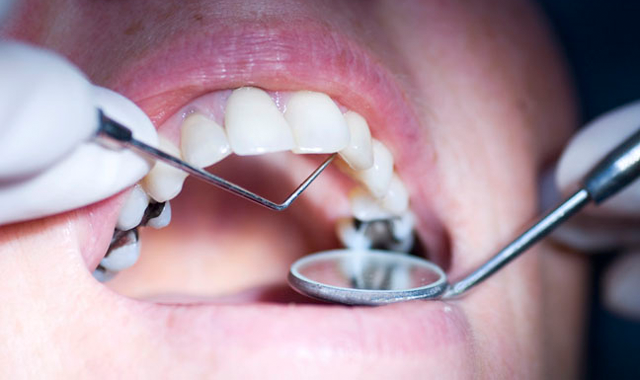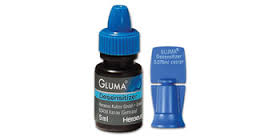4 reasons glutaraldehyde should be part of your composite regimen
The benefits of glutaraldehyde extend far beyond desensitization.

I’m going to make a case for using glutaraldehyde as the second step in all of your total-etch adhesive techniques. That is, any time you use a fourth- or fifth-generation bonding system.
Glutaraldehyde, popularized by the name brand “Gluma” by Kulzer, has become well-known as an additive to desensitize. The benefits of glutaraldehyde extend far beyond desensitization. It not only desensitizes, it also disinfects and strengthens the bonding agent’s ability to penetrate, therefore making your bond last longer.

Gluma has been used as a desensitizing agent since 1991, and it is a combination of 5% glutaraldehyde and 35% hydroxyethylmethacrylate (HEMA). In recent years, Gluma’s patent has run out, and there are currently less-expensive options available with the same chemical composition. I use G5 by Clinician’s Choice in my practice, and MicroPrime from Danville Materials is another less expensive alternative.
Current bonding techniques are known to cause post-operative sensitivity through the hydrodynamic theory of pain. When Gluma is used, the glutaraldehyde creates a plug inside of the dentin tubules that eliminates the hydrodynamic mechanism. It basically clogs the dentin pores so fluid can’t seep out, and post-op discomfort is significantly reduced.
Read more: Why making strong bonds efficiently makes a big difference
While the desensitizing effect of glutaraldehyde is reason enough to use it, there’s a second compelling reason that has gained attention recently. Glutaraldehyde has been shown to affect the longevity of the dentin-resin interface. Without getting too scientific, our bodies make enzymes that break down proteins, called MMPs, that get trapped in the demineralized dentin layer. It’s the MMPs that result in reduced bond strength and debonding over time2. Those MMPs are activated by our acid etchant during the adhesion process5,6.
MMPs, which degrade type I collagen, can slowly degrade the collagen fibrils at the interface of the dentin with the resin. Glutaraldehyde cross-links MMPs, inactivating their enzymatic activity. If you use glutaraldehyde on acid-etched dentin, you can effectively inactivate most MMP activity5, 6!
It is the water-loving monomers, sucg as acetone or ethanol in the primer, that allow bonding to moist, etched dentin. Although our bonding techniques have improved significantly, we still aren’t able to completely replace the water in the collagen matrix of dentin with monomer in our primer. Since this isn’t possible, we get the hybrid layer containing some voids.
So, we have MMPs activated by etching that want to break down collagen if they can get in there, and we have voids left during the adhesion process. These voids at the dentin-adhesive interface make the bond more susceptible to degradation by enzymes like MMPs over time5,6.
There’s another bonus we should highlight. If we air-dry the dentin after acid-etching, the air removes water from the collagen matrix, causing the collagen to collapse and condense. When there are less spaces between the collagen fibers, there’s decreased ability of our monomer to get into the collagen1. Not only do we have voids in the hybrid layer, but now we’ve dessicated the collagen and made it even harder to penetrate! When we re-wet the dentin after air-drying from the etchant, the collapsed collagen network expands again and our bond strength is increased. We can use glutaraldehyde for this re-wetting1.
Trending article: 5 reasons to revisit lasers for your dental practice
Glutaraldehyde has several benefits to its use an an anti-bacterial agent. It has a broad spectrum of action and a fast kill rate. It can destroy not only bacteria, but also fungal spores, tubercle bacilli and viruses. Mechanical debridement alone doesn’t effectively remove bacteria from a carious lesion. Acid etching kills S. mutans, but doesn’t kill acid-loving (acidophilic) and acid-producing (acidogenic) bacteria. In fact, it may even stimulate them3,4!
So, why are we going to use glutaraldehyde after acid-etching teeth?
- It desensitizes the tooth by blocking fluid flow.
- It inactivates harmful enzymes that break down bond strength like MMPs.
- It serves as a re-wetting agent to plump up the collagen fibers for monomer penetration.
- It is anti-bacterial.
References
1. Bedran-Russo AK, Pashley DH, Agee K, et al. Changes in stiffness of demineralized dentin following application of collagen crosslinkers. J Biomed Mater Res B Appl Biomater. 2008;86B:330-334.
2. Cilli R, Prakki A, de Araújo PA, et al. Influence of glutaraldehyde priming on bond strength of an experimental adhesive system applied to wet and dry dentine. J Dent. 2009;37:212-218.
3. Felton D, Bergenholtz G, Cox CF. Inhibition of bacterial growth under composite restorations following GLUMA pretreatment. J Dent Res. 1989;68:491-495.
4. Gorman SP, Scott EM, Russell AD. Antimicrobial activity, uses and mechanism of action of glutaraldehyde. J Appl Bacteriol. 1980;48:161-190.
5. Perdigao J, Reis A, Loguercio A. Dentin Adhesion and MMPs: A Comprehensive Review. JERD. 2013; 219-241.
6. Sabatini C, Scheffel D, Scheffel R, Agee K, Rouch K, Takahashi M, Breschi L, Mazzoni A, Tjaderhane, Tay F, Pashley D. Inhibition of endogenous human dentin MMPs by Gluma. Dent Mater. 2014; 30(7):752-8.
ACTIVA BioACTIVE Bulk Flow Marks Pulpdent’s First Major Product Release in 4 Years
December 12th 2024Next-generation bulk-fill dental restorative raises the standard of care for bulk-fill procedures by providing natural remineralization support, while also overcoming current bulk-fill limitations.